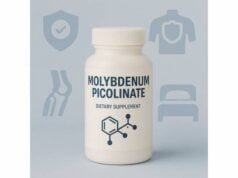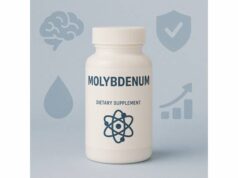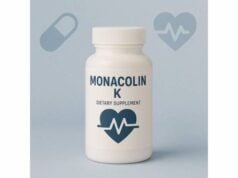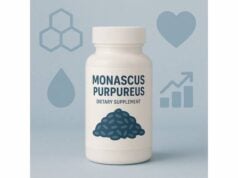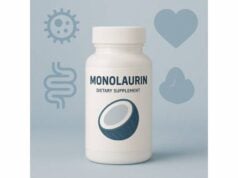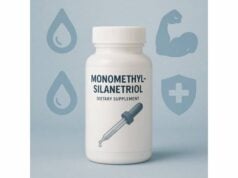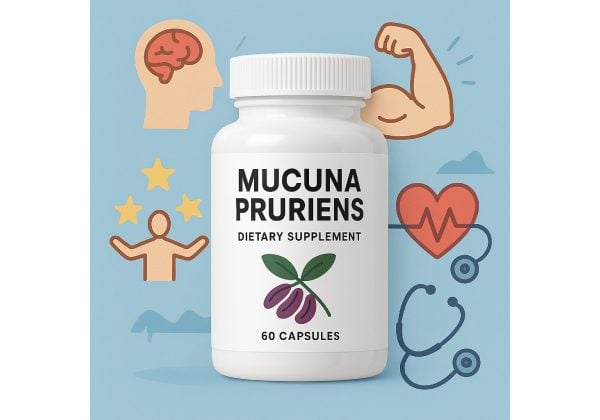
Mucuna pruriens—often called velvet bean—is a tropical legume valued in Ayurveda and increasingly studied in modern research. Its seeds naturally contain levodopa (L-DOPA), the direct biochemical precursor to dopamine. That chemistry explains much of the plant’s reputation: when used appropriately, mucuna can support movement in Parkinson’s disease under medical supervision, and it’s been explored for mood, stress response, and male fertility. At the same time, its very potency creates risks. Product quality varies widely, L-DOPA content can be unpredictable, and interactions with medicines are real. This guide translates the science into practical steps: what mucuna is, how it seems to work, who might benefit, how to take it, what can go wrong, and how to stay safe. You’ll find plain-language explanations, clinically referenced dose ranges, and decision points to discuss with your clinician. If you’re curious about natural dopamine support or considering mucuna as a complementary therapy, start here to understand both the potential and the limits.
Quick Overview
- May aid motor symptoms in Parkinson’s disease when supervised; possible benefits for stress resilience and male fertility.
- Quality varies; L-DOPA content in supplements can be far higher or lower than labels suggest.
- Typical general-use range: 100–300 mg L-DOPA per day from standardized extract; studies on fertility used 5 g seed powder daily for ~3 months; Parkinson’s dosing is individualized and medical.
- Avoid if pregnant or breastfeeding, with psychosis, uncontrolled cardiovascular disease, or when taking prescription levodopa or dopamine-acting drugs without clinician oversight.
Table of Contents
- What is Mucuna pruriens and how it works
- Science-backed benefits and use cases
- How to take Mucuna pruriens for results
- What affects how Mucuna pruriens works
- Safety, interactions, and who should avoid it
- How strong is the evidence so far
What is Mucuna pruriens and how it works
Mucuna pruriens is a climbing legume native to tropical regions. In traditional systems, roasted or boiled seeds were used for tremors, nervous system support, and vitality. The modern interest in mucuna centers on a single molecule: L-DOPA. Dopamine itself does not cross the blood–brain barrier effectively, but L-DOPA does; once inside the brain, enzymes convert it into dopamine. That’s why pharmaceutical levodopa has been a cornerstone medication in Parkinson’s disease for decades, and why mucuna—a natural source of the same active—can exert meaningful effects.
Seeds typically contain around 2.5–6% L-DOPA by weight, though agricultural variety, processing, and storage all influence that number. Extracts may be standardized to a stated percentage (often 15% or 20%), whereas whole-seed powders reflect the plant’s native variability. Beyond L-DOPA, mucuna seeds provide proteins, minor alkaloids, and antioxidant compounds. These could contribute ancillary effects such as stress buffering or sperm protection against oxidative damage. Still, most of the neurologic impact is best explained by L-DOPA pharmacology.
When L-DOPA is taken orally, a sizeable portion is converted to dopamine in the gut and peripheral tissues. That peripheral dopamine does not help brain symptoms but can cause side effects like nausea or drops in blood pressure. Prescription formulations pair L-DOPA with a “decarboxylase inhibitor” (such as carbidopa or benserazide) to reduce that unwanted conversion and push more L-DOPA to the brain. Nutritional strategies—spacing doses away from high-protein meals that compete for transport, maintaining hydration, and sometimes co-supplementing with vitamin C—are also used clinically to optimize absorption.
Because mucuna contains pharmacologically active L-DOPA, it should be approached like a medicine, not a benign botanical. The line between underdosing (no benefit) and overdosing (dyskinesias, agitation, palpitations) is narrow for some individuals, and potency varies by product. That’s why supervised use is essential in Parkinson’s disease, and why people without a clear indication should start low, monitor effects carefully, and avoid stacking mucuna with other dopaminergic agents unless a clinician is involved.
Finally, the hairs on mucuna pods contain mucunain, a protein that irritates skin. Commercial products use de-haired seeds or extracts; nevertheless, raw handling can cause itching. As with any concentrated botanical, quality control matters: identity testing, contaminant screening, and accurate labeling of L-DOPA content are non-negotiable if you want predictable results and safety.
Science-backed benefits and use cases
Parkinson’s disease (PD) motor symptoms. The most developed clinical use is in PD, where mucuna’s L-DOPA can reduce rigidity, bradykinesia, and tremor. Small randomized crossover trials have shown that single doses of roasted seed powder can deliver an “ON” period comparable to prescription levodopa/benserazide, and in some designs, onset can be faster with similar or fewer dyskinesias in the short window studied. Newer pharmacokinetic work in patients suggests longer ON-time and distinct metabolite patterns after mucuna compared to levodopa/carbidopa, consistent with plant matrix effects. These studies, while promising, are short-term and involve specialist oversight; they do not replace established PD regimens. In real life, if mucuna is considered, clinicians individualize dose and timing, watch for dyskinesias, and often still rely on prescription combinations for steady control.
Stress resilience and mood. Traditional use includes “adaptogenic” effects—helping the body manage stress. Mechanistically, normalizing dopamine can lift drive and motivation; antioxidant constituents may reduce lipid peroxidation in neural tissues. Preclinical studies report antidepressant-like actions across stress models, and early human work in other contexts (e.g., male infertility) has documented reductions in perceived stress. However, controlled human trials for depression or generalized anxiety are lacking. If mood support is your aim, begin with foundational measures (sleep, activity, psychotherapy, nutrition). If mucuna is added, use conservative doses and monitor for overstimulation or mood swings.
Male fertility. Seed powders have been used traditionally for vitality. In controlled clinical settings involving infertile men, daily mucuna improved sperm concentration and motility over roughly three months, alongside favorable shifts in reproductive hormones and reduced oxidative stress markers. Mechanisms likely include both dopamine-mediated hormonal effects and direct antioxidant protection of sperm cells. For this use, whole-seed powder, not high-potency extracts, has been most studied.
Bradykinesia and daily function outside PD. Dopamine underlies initiation of movement and focus. Some users without PD report subjective benefits in physical energy or task engagement. Evidence in healthy adults is limited. Because mucuna delivers pharmacologic L-DOPA, a “more is better” approach can backfire, inviting jitteriness or nausea. If experimenting, respect the drug-like nature of the plant.
Other areas under study. Investigators have explored mucuna’s acetylcholinesterase modulation, neuroprotection, and anti-inflammatory signaling, but clinical evidence remains preliminary. For metabolic health or glycemic effects, the data are early and mixed. Until robust trials in humans confirm benefit, treat these as hypotheses rather than reasons to take the supplement.
Who is most likely to benefit?
- People with PD managed by a neurologist who incorporates mucuna strategically.
- Infertile men seeking complementary support to improve semen parameters over a defined window.
- Highly select individuals targeting stress resilience and motivation after foundations are in place.
Who is unlikely to benefit?
- Those seeking a stimulant-like “dopamine boost” while already using caffeine, prescription dopaminergics, or MAO-B inhibitors.
- Individuals sensitive to dopaminergic side effects (palpitations, anxiety, nausea).
- Anyone hoping to replace prescribed PD medications without supervision.
How to take Mucuna pruriens for results
Choose the format thoughtfully. You’ll encounter (1) whole-seed powder (traditionally roasted and milled), (2) standardized extracts (e.g., 15–20% L-DOPA), and (3) capsules labeled with an estimated milligram amount of L-DOPA. For predictable physiologic effects, the key variable is the actual L-DOPA per serving, not the milligrams of plant powder. Independent analyses show some products contain far more—or less—L-DOPA than labels imply. Favor brands that disclose L-DOPA content per batch and provide third-party testing.
General-use starting range (non-PD). A conservative approach is 100–300 mg L-DOPA per day, divided in 1–2 doses. For a 15% standardized extract, 100 mg L-DOPA corresponds to ~670 mg extract; 300 mg corresponds to ~2,000 mg extract. Start at the low end for several days, watch for nausea, lightheadedness, restlessness, or headaches, then consider titrating once symptoms are absent and goals aren’t met. Many users find morning or early-afternoon dosing best to avoid sleep disruption.
Male fertility protocols. Clinical studies have used 5 g/day of whole-seed powder for approximately 12 weeks, often split in 2–3 servings. Because powders vary, adhere to the studied form when replicating this use, and re-test semen parameters after the intervention window to decide whether to continue.
Parkinson’s disease dosing. In PD, mucuna dosing is individualized medical therapy. Clinicians calculate L-DOPA equivalents based on the patient’s current regimen, then trial titrated amounts of mucuna powder or extract, sometimes paired with a decarboxylase inhibitor, sometimes not, depending on the clinical scenario. Even in short studies where mucuna performed comparably to levodopa/carbidopa, real-world maintenance is complex. Do not self-substitute mucuna for levodopa/carbidopa; involve your neurologist.
Timing with meals. Amino acids from protein compete with L-DOPA for transport across the gut and into the brain. For many, taking mucuna 30–60 minutes before meals or 2 hours after improves effect size. If nausea occurs when fasting, take with a small carbohydrate snack or ginger tea and reassess.
Titration tips.
- Define a single primary outcome (e.g., reduced morning stiffness, lower perceived stress, improved semen motility).
- Maintain a stable dose for 5–7 days before judging.
- Keep a short symptom and side-effect log.
- Avoid stacking mucuna with other dopaminergic agents (tyrosine, phenylalanine, selegiline, rasagiline, bupropion) unless directed by a clinician.
Cycling and duration. For non-PD, consider 8–12 weeks on, then 2–4 weeks off to reassess baseline function. For fertility protocols, 12 weeks aligns with a spermatogenesis cycle. For mood or motivation use, build in off-periods to avoid tolerance or dependence.
Adjuncts sometimes used clinically. A daily vitamin C source may assist absorption; ginger can mitigate nausea. Because vitamin B6 can increase peripheral decarboxylation of L-DOPA when not paired with a prescription inhibitor, avoid high-dose B6 taken at the same time as mucuna unless your clinician advises otherwise. Hydration and gentle movement can reduce orthostatic dips in blood pressure.
When to stop or reduce. New palpitations, agitation, insomnia, unusual involuntary movements, or hallucinations are stop-signals. If symptoms rebound when you discontinue, consult your clinician rather than restarting at the same dose on your own.
What affects how Mucuna pruriens works
Product variability. Analyses of commercial mucuna supplements reveal striking discrepancies: some products supply as little as a few milligrams of L-DOPA per serving; others deliver >200 mg—and some exceed labeled L-DOPA estimates by many-fold. Authentic seed samples themselves vary by cultivar and growing conditions. This variability explains why two people can have opposite experiences using different brands or even different lots from the same brand.
Processing and storage. Roasting, boiling, or fermenting seeds can change L-DOPA content and reduce irritants. Heat and humidity accelerate L-DOPA degradation during storage; oxygen exposure can also break it down. If you buy powder, choose smaller containers you can finish in a month or two, keep them sealed, and avoid heat.
Dietary protein. Large protein meals around dosing can blunt effects due to competition for intestinal and blood–brain transporters (LAT1). People with PD often redistribute protein to the evening; non-PD users can trial a low-protein window around mucuna to see if response improves.
Enzyme context. Prescription levodopa is paired with carbidopa or benserazide to reduce peripheral conversion. Mucuna products generally do not include these inhibitors. As a result, the same nominal L-DOPA dose from mucuna may feel weaker (less reaching the brain) but also more likely to cause peripheral side effects. Some plant matrices could modestly alter L-DOPA metabolism—e.g., affecting catechol-O-methyltransferase (COMT) activity—but this is still being explored.
Co-supplements and medications.
- Dopaminergics (levodopa/carbidopa, pramipexole, ropinirole) can interact additively or unpredictably. Combining without supervision risks dyskinesias or dopamine dysregulation behaviors.
- MAO-B inhibitors (rasagiline, selegiline) and COMT inhibitors (entacapone, opicapone) change L-DOPA metabolism; adding mucuna may overshoot.
- Antipsychotics (dopamine antagonists) can counteract mucuna’s effects and vice versa.
- High-dose vitamin B6 near mucuna dosing may increase peripheral L-DOPA breakdown in the absence of a decarboxylase inhibitor.
Physiology and genetics. Baseline autonomic tone, gut motility, and transporter polymorphisms (e.g., in COMT) shape response. People prone to orthostatic hypotension may feel light-headed at doses tolerated by others. Those with anxiety sensitivity may react to even small dopaminergic shifts.
Use case and outcome measure. If your goal is semen quality, whole-seed powder over months is the studied route; chasing immediate “motivation” with a high-potency extract invites side effects. If your aim is motor relief in PD, your neurologist will titrate to movement outcomes, not subjective energy.
Expectations and context. L-DOPA is not a universal performance enhancer. In well-rested, low-stress individuals, adding mucuna often provides little. In sleep-deprived or over-caffeinated people, it can aggravate jitteriness. Pair any mucuna trial with sleep regularity, balanced nutrition, and physical activity; these improve outcomes and reduce the temptation to escalate doses.
Safety, interactions, and who should avoid it
Common side effects. Nausea, reduced appetite, lightheadedness (especially on standing), headache, palpitations, and insomnia can occur—largely due to peripheral dopamine. Taking with a small snack and staying hydrated may help. If symptoms persist beyond a few days at a low dose, discontinue and reassess.
Neurologic and behavioral risks. At higher exposures, dopaminergic therapies—including mucuna—can provoke dyskinesias (involuntary movements), agitation, impulse control disorders (e.g., compulsive shopping or gambling), or hallucinations. A rare but important pattern called dopamine dysregulation syndrome has been reported from excessive mucuna use in PD, characterized by compulsive dosing and behavioral toxicity. Any such signs warrant immediate medical attention and stopping the supplement.
Cardiovascular considerations. Dopamine’s peripheral effects can lower blood pressure or trigger palpitations. Individuals with unstable cardiovascular disease should avoid unsupervised use. Those on antihypertensives should monitor for additive drops in pressure.
Gastrointestinal and dermatologic issues. Nausea is the most common complaint; slow titration and ginger may help. Raw pod hairs can irritate skin; reputable supplements remove them, but avoid handling unprocessed pods.
Interactions to know.
- Do not combine mucuna with prescription levodopa or dopamine agonists unless your clinician directs it.
- Use caution with MAO-B inhibitors (rasagiline, selegiline), COMT inhibitors (entacapone, opicapone), and stimulants (amphetamines, methylphenidate).
- High-dose vitamin B6 taken at the same time may reduce central availability of L-DOPA in the absence of carbidopa/benserazide.
- Space mucuna and high-protein meals to reduce competition for absorption.
Population cautions.
- Pregnancy and breastfeeding: avoid; human safety data are insufficient, and dopaminergic shifts may be undesirable.
- Psychiatric history: people with psychosis, bipolar disorder, or severe anxiety should avoid mucuna unless a psychiatrist agrees.
- Children and adolescents: avoid due to lack of dosing and safety data.
- Liver or kidney disease: use only with specialist guidance; published safety data are limited.
Quality and contamination. Independent surveys have found wide discrepancies between labeled and actual L-DOPA content. Choose brands with full ingredient disclosure, batch-specific assays, and third-party testing for identity, potency, and contaminants (heavy metals, pesticides, microbes). Be skeptical of marketing claims like “98% naturally occurring levodopa”—they are not physiologically plausible for seed extracts and may signal mislabeling.
When to seek care. New involuntary movements, severe nausea or vomiting, mental status changes, chest pain, pronounced orthostatic dizziness, or compulsive behaviors are reasons to stop and contact a clinician promptly. For PD patients, any medication change—including adding or stopping mucuna—should be coordinated with your neurology team to avoid destabilizing motor control.
How strong is the evidence so far
Parkinson’s disease. The clinical literature contains several small, well-designed crossover trials comparing single doses of mucuna preparations to standard levodopa combinations in PD. Across these, mucuna generally achieved similar short-term motor benefit, sometimes with a quicker onset and without an increase in acute dyskinesias. A recent patient-based pharmacokinetic study reported extended ON-time and distinctive metabolite profiles after mucuna ingestion compared with levodopa/carbidopa, raising the possibility that non-L-DOPA constituents modulate metabolism. Beyond acute studies, longer-term, adequately powered trials are sparse. A recent systematic review summarizes efficacy signals but emphasizes heterogeneity in preparations, dosing, and endpoints—and urges cautious, supervised integration rather than wholesale substitution.
Mood and stress. Preclinical research is broad and encouraging, pointing to dopaminergic, serotonergic, antioxidant, and anti-inflammatory mechanisms. Narrative reviews highlight these pathways, and limited human work in other indications suggests reduced perceived stress. Still, randomized controlled trials for depression or anxiety in humans are lacking. At present, evidence supports exploratory, low-dose, time-limited trials only after foundational lifestyle measures, avoiding use in vulnerable psychiatric populations.
Male fertility. Multiple clinical studies—primarily from one research group—have demonstrated improvements in semen quality and hormonal balance over roughly three months with daily whole-seed powder. While results are consistent with antioxidant and neuroendocrine mechanisms, multicenter replications would strengthen confidence. For couples pursuing conception, mucuna may be considered as a complementary measure alongside conventional evaluation and treatment, with periodic semen analyses guiding continuation.
Product quality and safety. Independent laboratory surveys of commercial mucuna supplements reveal marked labeling inaccuracies, with some products delivering many times the L-DOPA implied by the label—and others providing little or none. These discrepancies undermine both efficacy (unreliable dosing) and safety (unexpected dopaminergic side effects). In PD, case reports document behavioral toxicity from unsupervised, excessive mucuna use. Together, these findings argue for clinician involvement, careful brand selection, and patient education.
Bottom line. Mucuna is not a generic “dopamine booster.” It is a plant-derived L-DOPA source with drug-like effects. The strongest human evidence supports supervised, targeted use in PD and time-bound use for male fertility; other applications remain preliminary. If you opt to try mucuna, center safety: confirm actual L-DOPA content, start low, monitor closely, and coordinate with your healthcare team.
References
- Mucuna pruriens in Parkinson disease: A double-blind, randomized, controlled, crossover study — 2017 (RCT)
- Levodopa Content of Mucuna pruriens Supplements in the NIH Dietary Supplement Label Database — 2022
- Dopamine Dysregulation Syndrome Presenting as Overuse of Mucuna pruriens Levodopa Supplement — 2024 (Case Report)
- Mucuna pruriens improves male fertility by its action on the hypothalamus-pituitary-gonadal axis — 2009
- Japanese Mucuna pruriens (Hasshou Beans) Showed Fast-acting and Long-lasting Effects in Parkinson’s Disease — 2024
Disclaimer
This article provides general educational information about Mucuna pruriens and does not constitute medical advice. It is not a substitute for diagnosis, treatment, or personalized guidance from a qualified healthcare professional. Because mucuna contains pharmacologically active L-DOPA, use can interact with medications and underlying conditions. Do not start, stop, or change any treatment—including mucuna—without consulting your clinician, especially if you have Parkinson’s disease, psychiatric conditions, cardiovascular issues, are pregnant or breastfeeding, or take dopaminergic or MAO-B/COMT-inhibiting drugs.
If you found this guide useful, please consider sharing it on Facebook, X (formerly Twitter), or your favorite platform, and follow us for future evidence-based articles. Your support helps us continue creating high-quality, reader-first content.

